-
 +32 +1
+32 +1Egypt is building a $1-billion mega-museum. Will it bring Egyptology home?
For 100 years, Egypt’s scientists have watched as their nation’s story was largely told by institutions from Europe and the United States. Can a stunning new museum change that narrative?
-
 +28 +1
+28 +1An Energy Saving House from 3400 Years Ago
It is probable that more prehistoric houses with a construction of two wattles were built than has been estimated so far—thus making use of the good insulation.
-
 +15 +1
+15 +1Discarded Roman artefact may have been more than a good luck charm
The wooden object was initially thought to be a darning tool since it had been found alongside dozens of shoes and dress accessories, as well as other small tools and craft waste products such as leather off-cuts and worked antler, that were discarded in the 2nd century fort ditch.
-
 +18 +1
+18 +1After 350 years, sea gives up lost jewels of Spanish shipwreck
It was a Spanish galleon laden with treasures so sumptuous that its sinking in the Bahamas in 1656 sparked repeated salvage attempts over the next 350 years. So when another expedition was launched recently, few thought that there could be anything left – but exquisite, jewel-encrusted pendants and gold chains are among spectacular finds that have now been recovered, having lain untouched on the seabed for hundreds of years.
-
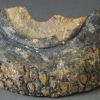 +14 +1
+14 +1Could this pottery shard be a 1,000-year-old hand grenade? Signs point to yes
Archaeologists have analyzed the residue inside four medieval ceramic shards and determined that one of them may have been used as a hand grenade, according to a recent paper published in the journal PLOS One. And the explosive used was likely made locally rather than gunpowder imported from China.
-
 +2 +1
+2 +1Mystery of multiple extinctions in the Jurassic solved
The only halfway realistic aspect of “Jurassic Park” may be that the land was thronged with life, much of which with fangs. One can hardly generalize about the weather 200 to 145 million years ago, but the Jurassic by and large seems to have been warm and wet. The fact is that a lot of new species emerged in that time, from the lumbering stegosaurs and gigantosaurs to the earliest known proper birds – yes, your duck had ancestors back then. Tiny rodents began to emerge. In the Late Jurassic, the fearsome allosaurus arose too. And no, it isn’t a T-rex.
-
 +25 +1
+25 +1A robot dog called Spot is helping restore the ancient city of Pompeii
The robot, made by Boston Dynamics, could go to places that aren't safe for humans, Pompeii authorities say.
-
 +27 +1
+27 +1Psychedelic beer served at intimate dinner parties helped an ancient empire in the Andes rule for centuries, study finds
Beer laced with hallucinogenic drugs may have helped the rulers of an ancient, pre-Incan empire in South America maintain power for about 400 years, according to new archaeological research. The Wari Empire, which spanned across the highlands of modern-day Peru between circa 600 AD and 1000 AD, likely prospered thanks to the political allegiances forged while consuming the hallucinogenic beverage, the study in the Antiquity journal indicates.
-
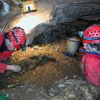 +16 +1
+16 +1Archaeologists Discover Oldest Domesticated Dog Remains in Americas
When Quentin Mackie first crawled into a limestone cave on the west coast of Haida Gwaii, an archipelago off British Columbia’s north coast, he wasn’t expecting to enjoy the experience. The cave was cold, cramped, and damp, yet Mackie, an archaeologist with the University of Victoria in British Columbia, found the long days excavating underground quite pleasant: “The heightened sensory experience” in the passages was amazing.
-
 +15 +1
+15 +1How the FBI Discovered a Real-Life Indiana Jones in, of All Places, Rural Indiana
A 90-year-old amateur archaeologist who claimed to have detonated the first atomic bomb was also one of the most prolific grave robbers in modern American history.
-
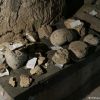 +3 +1
+3 +1Archaeologists discover 'Lost Golden City of Luxor'
Archaeologists have uncovered the remains of an ancient city in the desert outside Luxor ion Egypt. They say it dates back to the golden age of the pharaohs more than 3,000 years ago.
-
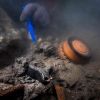 +2 +1
+2 +1Archaeologists find ancient Egyptian warship sunk near Alexandria
Twenty-four hundred years ago, Heraklion was ancient Egypt’s largest port on the Mediterranean Sea. Today, the ancient city lies submerged beneath Abu Qir Bay, a few kilometers off the coast of Alexandria. Archaeologists recently discovered the wreck of a warship from the city’s final years buried in the seabed for 2,100 years beneath five meters of clay and crumbled pieces of an ancient temple to the Egyptian god Amun.
-
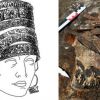 +4 +1
+4 +1Archaeologists unearth graves of ancient warrior women in Russia
The find suggests there may be truth behind legends of Amazons
-
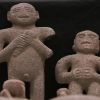 +19 +1
+19 +1Costa Rica archaeologists in awe as Brooklyn Museum returns 1,305 artifacts
An unfinished tombstone, a large ceramic vase painted with beeswax, human representations and ancient tools to process corn are artifacts of a collection of 1,305 pieces that have been returned to Costa Rica. It is the second time the Brooklyn Museum in New York City has returned pieces, some older than 2,000 years, to the central American country.
-
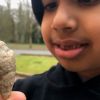 +19 +1
+19 +1Boy finds 480 million-year-old fossil in garden using set he got for Christmas
A six-year-old boy has found a fossil up to 488 million years old while digging in his garden with a fossil-hunting set he received for Christmas. Siddak Sing Jhamat, known as Sid, had been digging in his garden in Walsall, in the West Midlands, "for worms and things like pottery and bricks", he said.
-
 +16 +1
+16 +1Lawyers used sheepskin as anti-fraud device for hundreds of years to stop fraudsters pulling the woo
Medieval and early modern lawyers chose to write on sheepskin parchment because it helped prevent fraud, new analysis suggests. Experts have identified the species of animals used for British legal documents dating from the 13th to 20th century, and have discovered they were almost always written on sheepskin, rather than goatskin or calfskin vellum.
-
 +21 +1
+21 +1Riches in a Bronze Age grave suggest it holds a queen
A lavish Bronze Age burial found in southeastern Spain may hold a queen’s remains, researchers say. This unexpected discovery bolsters suspicions that women wielded political power in that region’s El Argar society, which lasted from around 4,220 to 3,570 years ago. Researchers have typically assumed that men ran Bronze Age societies (SN: 10/10/19).
-
 +17 +1
+17 +1Ancient hunter-gatherer seashell resonates after 17,000 years
Archaeologists have managed to get near-perfect notes out of a musical instrument that's more than 17,000 years old. It's a conch shell that was found in a hunter-gatherer cave in southern France. The artefact is the oldest known wind instrument of its type. To date, only bone flutes can claim a deeper heritage.
-
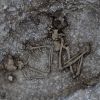 +19 +1
+19 +1Archaeologists unearth bronze age graves at Stonehenge tunnel site
Bronze age graves, neolithic pottery and the vestiges of a mysterious C-shaped enclosure that might have been a prehistoric industrial area are among the finds unearthed by archaeologists who have carried out preliminary work on the site of the proposed new road tunnel at Stonehenge.
-
 +9 +1
+9 +1What do we know about the lives of Neanderthal women?
Not all Neanderthals were ‘cavemen’: half were women. What can archaeologists tell us about how they lived?
Submit a link
Start a discussion




















